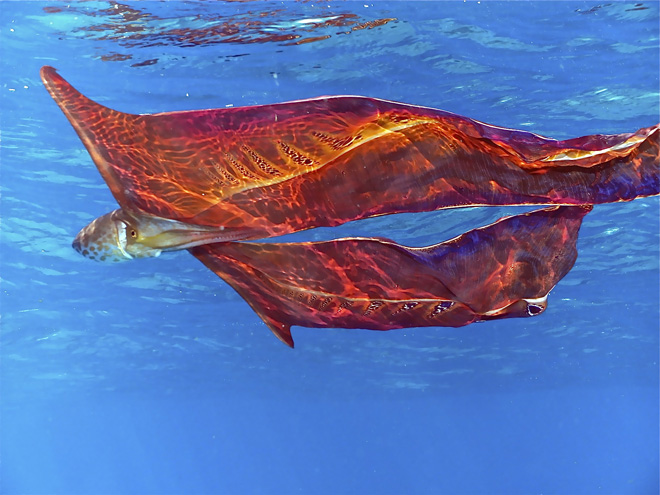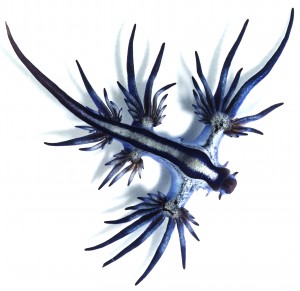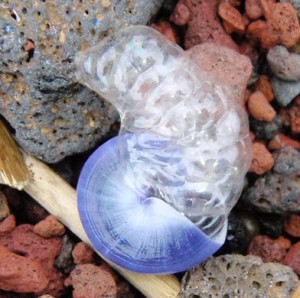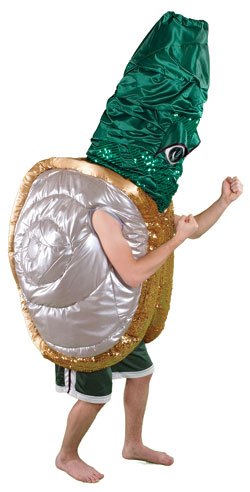
Black Manta. Ocean Master. The Trench. Scavenger. King Shark. Toxin. The Fisherman. Aquaman has had some pretty memorable villains over the last 80 years. Also, the Fisherman. This is Southern Fried Science, a blog famous for two things – inspiring the world with our unique blend of marine science and conservation and doing horrible, horrible things to Aquaman.
Catch me flounder for I have finned. It has been 98 days since my last Aquaman is Awesome post.
Sure, Black Manta has some pretty sweet gear, a compelling back story that justifies his hatred of the Atlantean king, and he looks like he’s poised for some serious awesome during DC’s Villains Month. The Trench even appear to be able to utilize chemosynthesis, when they’re not trapping dogs in cocoons. You know where I’m going with this, don’t you?
That’s right. No matter how ridiculous Aquaman’s comic book foes become, you can bet all your clams I’ll find real marine organisms that would make equally amazing villains. Here’s eleven of them.
Meet Man-o-War, the colonial killer that understands the value of teamwork.
Imagine a super villain composed of thousand of individual organisms that form one giant super-organism. Rather than a body filled with vital organs, this villain can take massive damage without a loss of ‘self’, only to spawn new minions to replaced the damaged parts. Now give this deadly foe 60-foot long venom-filled tentacles whose sting brings excruciating pain. Such a villain would certainly assume the identity ‘Man-o-War’.
The Portuguese Man-o-War (Physalia physalis), arguably the best known of the siphonophores (it is a cnidarian, but it is not a jellyfish) possess tentacles that unleash an unbelievably painful sting, the weapon of choice for our newest menace. But the weapon does’t make the man (o-war), and our villain has a strategic secret. Man-o-Wars are not singular animals, they are a colony of highly specialized polyps — each one an individual animal that combines to form a deadly super-organism.
The pneumatophore is a polyp the creates a gas-filled bladder for flotation. This produces the distinctive ‘sail’ of the Man-o-War, a bilaterally symmetric air sac that allows the colonial to remain at the surface and provides some propulsion by catching the wind. The sail is not just a sac of air, it also has defensive capabilities. When attacked, the sail is able to deflate, allowing the colony to sink below the surface and avoid predators. The gonozooids, which occur in tight clusters, are responsible for reproduction. Man-o-Wars engage in both asexual and sexual reproduction. Young colonies can reproduce clonally by budding, but as the colony becomes more mature, that gonozooids become sexually differentiated and release eggs and sperm to form new colonies. The gastrozooid takes care of all the digestion-related needs and surround the dastardly dactylozooids. Finally, the dactylozooids produce 10-meter (or longer!) tentacles that capture prey and drag them towards the gastrozooids. This is some serious teamwork.
Man-o-War even has minions. The shepherd fish is immune t the stinging tentacles and hangs out within the tentacles. The fish gains the protection of its lethal ally while the Man-o-War gets to use the shepherd fish as bait to lure other fish into its deadly trap.
Imagine Aquaman facing off against a colony of polyps that combine to form a deadly super-organism with massive stinging tentacles. Siphonophores have no nervous system, so Aquaman’s fish-talking power are useless. No matter how many dactylozooids, gatrozooids, and pneumatophores he destroyed, the gonozooids are there, churning out more.
But Man-o-Wars are not without their own predators, the largest of which is the enormous, cnidarian nom nom-ing Leatherback Turtle. Despite their size, leatherbacks are the largest live sea turtle, they survive exclusively on large numbers of jelly-like organisms — to the tune of the equivalent of eating 16 cucumbers per day. Leatherbacks aren’t the only animals that prey on Man-o-War, the salacious siphonophore has many foes, two of which join this list as super-villains in their own right.
The Posse of Pelagic Mollusks.
More often than not, super-villains are their own rivals, with factions arising faster than DC heroes can return from the dead. Often these factions form around shared goals, mutual foes, limited resources. The Posse of Pelagic Mollusks is united by a common prey. They all hunt and consume Man-o-Wars, though each for different reasons.
The Blanket Octopus (genus Tremoctopus) is a beautiful creature. She soars through warm pelagic seas on wings formed by a massive membrane that stretches between her tentacles. This cloak makes here appear even larger than her already impressive 2 meter length, casting an intimidating shadow across the sea floor. The female blanket octopus is truly one of the monarchs of the molluscan phylum*.

The male, is, however, a much less impressive creature. Weighing in at 10,000 times less massive than his mate (no, ten thousand is not a typo), this diminutive suitor is barely 2.5 centimeters long and almost entirely defenseless. Life is short for these tiny males. The male possesses a hectocotylus, a specialized tentacle that stockpiles sperm. During intercourse, the hectocotylus detaches, crawls up into the female’s mantle, and inseminates her eggs. The now hectocotylus-less male promptly dies.
The male blanket octopus may be tiny, but he makes up for his size with cunning. Like the shepherd fish, blanket octopuses are immune to the painful sting of the Man-o-War. Rather than using the siphonophore for protection, the crafty male blanket octopus (and, to a lesser extant, juvenile females) yanks the poisonous tentacles from the cnidarian and carries them around like a whip.

The Blue Angel (Glaucus atlanticus) shares the blanket octopus’s love of co-opted Man-o-War stings, but takes a rather different approach. The overriding theme of the Posse of Pelagic Mollusks (other that that they all prey on Man-o-War in one way or another) is that these are among some on the most beautiful creatures in the ocean. The blue angel is no exception. This luminous blue nudibranch glides across the sea’s surface using an air sac. Curiously, the air sac is located on its ventral surface, so the blue angel swims upside down.
Blue angels prey on pelagic jelly-like organisms, including our old friend the man-o-war. Like many nudibranchs, blue angels can incorporate cnidarian stinging cells into their mantle. Once they feast, they gain the primary defense of their favored prey. But man-o-war isn’t their only prey. Blue angels also attack by-the-wind sailors, blue buttons, and even the final member of this pelagic posse: Janthia janthia, the purple snail.

Purple snails are a pelagic gastropod that floats by producing rafts made of chitinous bubbles. Like the others, they feed on man-o-wars but don’t have any exceptional skills to exploit the man-o-wars stinging cells, rather J. janthia (oh, hey, we’ve already got a classic Marvel alter-ego alliteration) just eats. Which makes the purple snail the third, slightly goofy member of the posse. Of course, Janthia has to watch out for the devious blue angel, who just might eat the purple snail if given the chance.
Iceworm seeks brutal revenge on the offshore industry.
In the deep Gulf of Mexico, when the water temperature is barely above freezing and the pressure could crush a man like a styrofoam cup, there exists crystalline solids composed of water and natural gas. Primarily composed of methane, these gas hydrates will burn when brought to the surface and lit, creating delightful balls of flame that, thanks to their crystalline structure, can be held in the hand (you see where I’m going with here, right?). Methane hydrates tend to co occur with natural gas deposits and may become an exploitable energy source in the near future.
There’s just one problem: gas hydrates are home to the bizarre iceworm (Hesiocaeca methanicola), a polychaete that burrows through these frozen mounds of energy and may graze upon the chemosynthetic bacteria found there. So when offshore industries begin exploiting Iceworm’s home, he has no choice but to lash out against the human race. Now Aquaman must find a way to protect the ice worm’s home while simultaneously protecting the human race from these rampaging, though morally justified, villains. And, just for fun, let’s say Iceworm (the villain, not the organism) can hurl flaming balls of gas hydrate. Because science.
Also, this is what an iceworm looks like:

Greenland Shark might give Squirrel Girl a run for most inexplicably effective.
The Greenland shark is one of the world’s largest sharks, equaled only by the harmless whale shark and the over-hyped great white. As the most northerly shark, it is capable of surviving in extreme cold. Of course, the creature that the Inuit named Eqalussuaq is so slow that its entire family is collectively called “sleeper sharks”. It is short, thick, and round with tiny eyes, tiny fins, and tiny gill slits — none of which are attributes commonly associated with particularly effective hunters. They are, quite possibly, the world’s slowest swimming shark.
So how can this lethargic interloper possibly pose a threat to Aquaman, let alone the human race? Two words: Polar Bear. According to notable shark biologist David Shiffman, Greenland sharks have been caught with entire polar bears in their gut. Not only does this mean that molasses lightning can take out one of the fiercest land mammals but it is immune to Aquaman’s most dangerous attack: The Polar Punt.
Also, the Greenland shark has recently be spotted roaming as far south as the Gulf of Mexico, a curious development which hints at a climate change derived motivation to give this comically unshark-like shark villain a compelling origin story.
There are times when you need comic relief from your villains. For those times, the Sarcastic Fringehead.
This fish is aggressive, territorial, and pretty darn lethal (if you’re a smaller fish). Fringy can hold his own if he needs to, but he really shines during the inevitable bad-guy-versus-bad-guy comic moment.
The fish is called a Sarcastic Fringehead. Watch!
httpv://www.youtube.com/watch?v=BjexNXJYblQ
Well, what did you think it would look like?
The Brotherhood of Benthic Mollusks.
It is simply not sufficient to have one terrible trio of murderous mollusks for Aquaman to square off against, we clearly need two. Mollusks are among the most diverse phyla in the ocean, dwarfed only by arthropods and polycheates (and maybe nematodes) so it’s no surprise they make up a significant portion of this list and hey, on the bright side, this is the first of the “Andrew makes lists of ridiculous organisms with tenuous pop-culture connections” that feature not one, but two whole vertebrates. Just for you, chordate lovers.
But before we get to them, you’re going to have to confront three more malicious molluscan mobsters.
Blue Ringed Octopus: Like many octopodes, the Blue Ring Octopus is packed with chromatophores. These special pigment-bearing cells allow the octopus to camouflage itself, disappear into the background, and avoid detection. But when they are discovered, the blue ringed octopus rapidly changes from a demure coral pattern to a bright yellow and blue polka dotted affair. Why become so visible when threatened? The deadly leader of the brotherhood of benthic mollusks is filled to the proverbial gills with potent neurotoxin. Its venom can kill a human.
Fortunately, the blue ringed octopus is a dignified villain, happy to go about its villainy unmolested. It is happy to go about the reef, preying on hapless crabs and other arthropods, whose shells are powerless against the octopus’s powerful beak and paralyzing venom. Those bright blue rings are a warning to all marine predators and super heroes to stay away.
Cone Snail: If the blue ringed octopus is bright and flashy to warning enemies away, the cone snail is deceptively attractive. It may look harmless, even lovely, and many an unwary beach comber has plucked this delicately pattern shell from the sea floor, only to encounter the viscous creature within. This globally distributed genus uses a needle-like radula to inject its victims with a powerful paralytic agent. Its prey is usually polychaetes and other mollusks, but the most poisonous can be fatal to humans and Atlanteans alike.
httpv://www.youtube.com/watch?v=JjHMGSI_h0Q
Geoduck: No, it’s not a rock-shaped duck (or for that matter a duck-shaped rock). The geoduck (pronounced GOOEY-duck) is a clam. A delicious clam. It has no special powers, but don’t tell that to the students of Evergreen State College or you’ll have to face off against the fightin’ Geoducks.

Faster than lightening? Ever so frightening!
You knew this was coming. After nearly a year of making list of ridiculous marine organisms, after covering everything from spoonworms to radioactive fungi, this was inevitable. It is time to talk about dolphins. Of all the lists I’ve made so far, this is clearly the most appropriate one to feature Tursiops truncatus, the common bottlenose. Let’s review:
- Dolphins are pretty smart. Don’t believe the hype, they’ve got a solid brain behind that melon and they know how to use it.
- Dolphins have distinct names for each other. This makes it easier for evil dolphins to maintain an alter ego.
- Dolphins are brutal. There’s no two ways about it, they can be as violent as they want to be.
- Dolphins can see the future. That’s why they’ re always screaming.
- They are already embedded in our society. We brought them on land, fell in love with them, and did that whole trapped them in tiny tanks and forced them to perform for us. Yeesh, is there any wonder why they occasionally just drag swimmers out to sea?
Dolphins have the cunning, the social structure, and the motivation to become the ocean’s most terrifying super villain. Don’t let their smiles fool you, they are plotting our destruction.
Hey, if Gorilla Grodd can rise up against us, why not Tursiops Trodd?
*You have no idea how hard I fought not to call it a kingdom. Taxonomic correctness trumps a good pun, every time.
I love this blog!!!!
Considering we humans crawled out of the sea eons ago, I wonder what the evolution of some of the monsters of the deep will portend.
Katy bar the door; all bets are off!